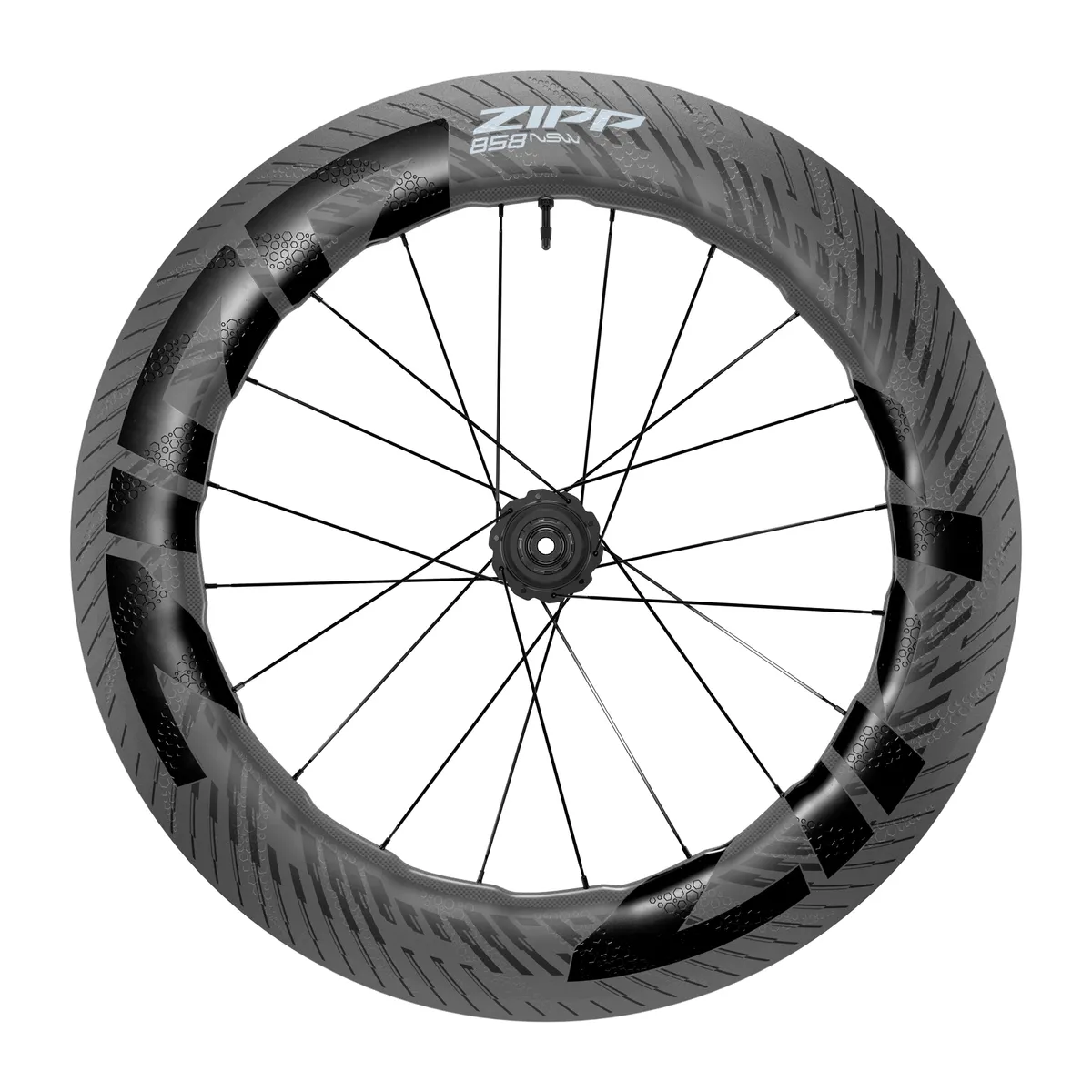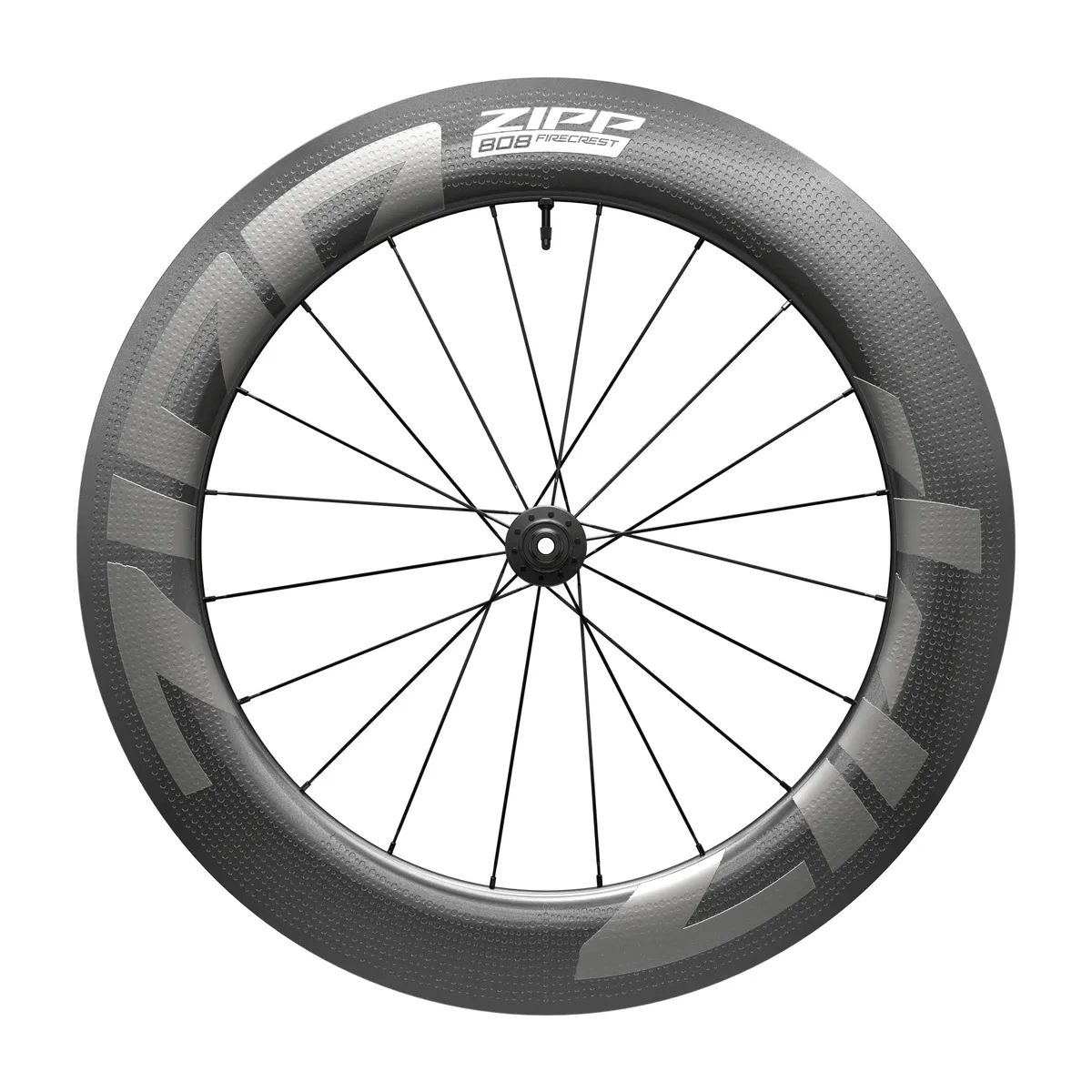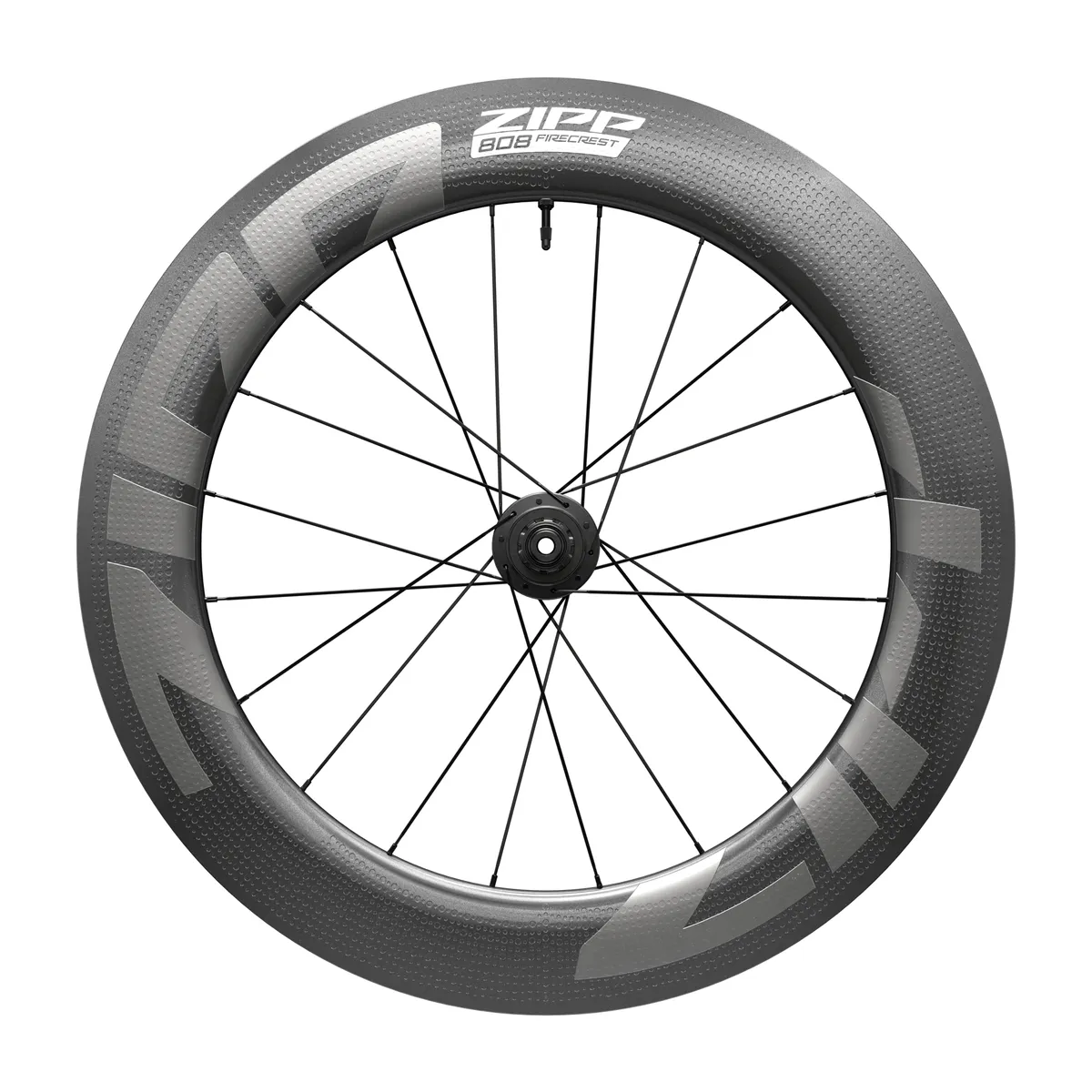Zipp’s wheel range has been overhauled completely over the last couple of years, with the brand making a wholesale switch to hookless and tubeless. This now includes the 808 Firecrest and 858 NSW wheelsets.
The final piece in the puzzle was the brand's deepest rims, and the 808 (80mm-deep) and 858 NSW (82/85mm-deep) have been revamped to reduce weight and improve performance, according to Zipp.
With the new 8-series wheels comes a wider 23mm internal rim shape that’s optimised for 28mm tyres, as well as a new construction method that Zipp says makes these new hoops the brand's ‘most rideable’ specialist speed wheels yet.
They're claimed to be faster, too. Combining aero and efficiency gains, Zipp says the 858 wheelset is nine watts faster, while the 808 is six watts faster.
And, in what’s been a trend for Zipp wheels recently, the new wheels are also cheaper.
The 858 NSW now comes in at £1,585 / $2,000 / €1,775 for the front wheel and £1,985 / $2,400 / €2,225 for the rear, while the 808 is £1,095 / $1,125 / €1,225 for the front and £1,140 / $1,175 / €1,275 for the rear.
Both are available in XDR or Shimano/SRAM freehub options (a Campagnolo N3W driver is available separately).
Zipp 858 NSW | What you need to know
- 243g lighter than the previous model
- 1,530g claimed weight (existing 858 NSW, 1,773g)
- Optimised tyre bed for easy tyre installation
- Sawtooth rim and HexFin ABLC dimple pattern
- 82/85mm-deep rim profile
- Minimum 25mm tyre width
- Optimised for 28mm tyres
- 23mm internal width with tubeless and hookless rim profile
- Lifetime warranty
- Cognition V2 hubs with Axial Clutch V2 from the 454 NSW
- £622 / €642 / $242 cheaper than the outgoing model
Updating a winner

The 808 has an impressively broad set of victories in its long history, from multiple Kona Ironman wins, to World Championship and Olympic time trial victories, Tour de France stage wins – both road and TT – and Milan-San Remo.
For the new wheels, Zipp wanted to take the 8-series platform and move it forward in terms of rideability and weight, as well as the usual aero updates.
The idea, according to Zipp, was to make the 808 and 858 more usable for any road discipline (where conditions would favour it) without compromising the rider, rather than the wheels being aimed primarily at time trials and triathlon.
Zipp 808 Firecrest | What you need to know
- 282g lighter than the previous model
- 1,635g claimed weight (existing 808 Firecrest, 1,917g)
- Minimum 25mm tyre width
- Optimised for 28mm tyres
- 80mm-deep rim profile
- Lifetime warranty
- 23mm internal width with tubeless and hookless rim profile
- £565 / €714 / $713 cheaper than the outgoing model

“We’ve historically looked to improve aerodynamics as the main goal of wheel design, especially when it comes to a rim as deep as the 808/858,” says Ruan Trouw, Zipp’s advanced development engineer.
“What we learned from the 303 and 404 development, is that many other elements are in play, and they require plenty of our attention too.”
This has led to Zipp’s mantra of ‘Total System Efficiency’; a way of weighting the various priorities in the design of a wheel to find the best balance.
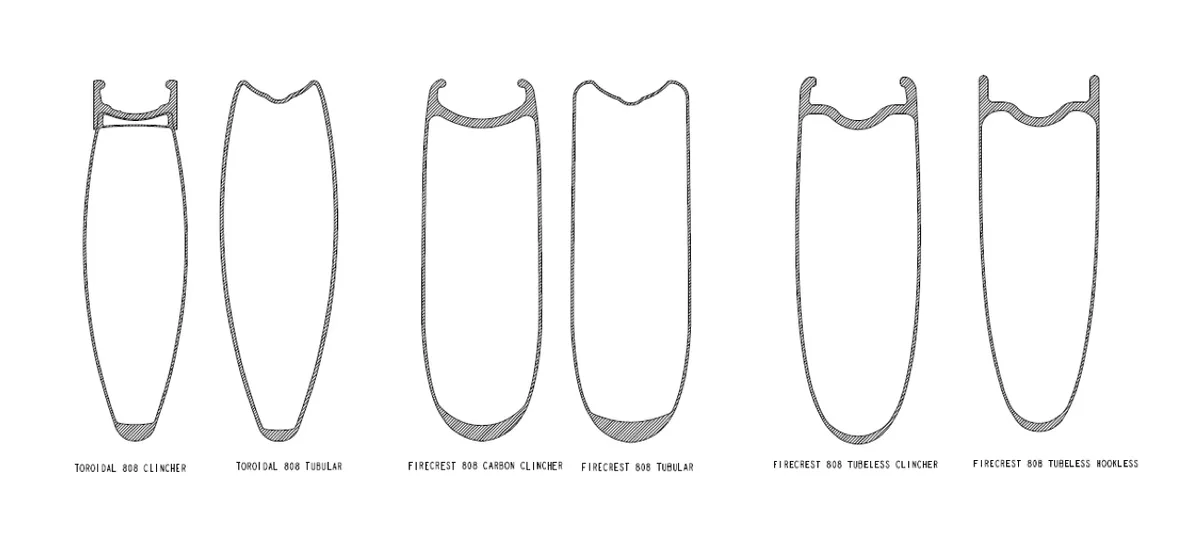
Total System Efficiency explained
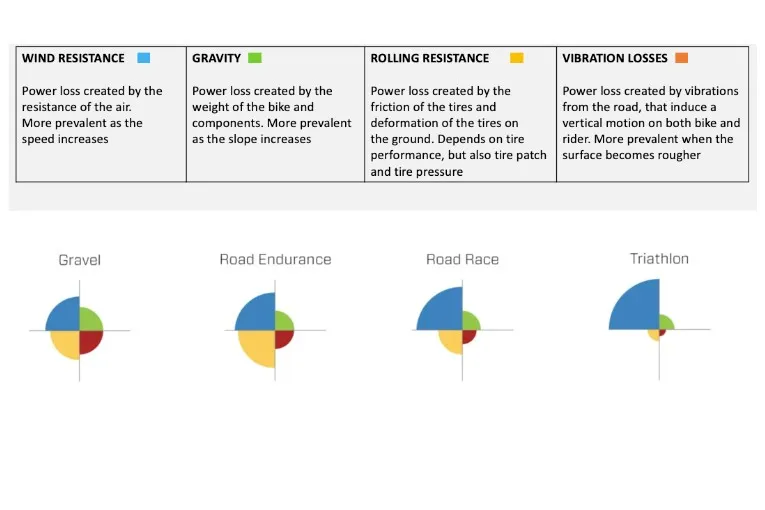
Total System Efficiency (TSE) focuses on four areas, with varying importance depending on the type of rider and riding conditions: wind resistance, gravity, rolling resistance and vibration losses. Let’s take a look at each in turn.
Wind resistance
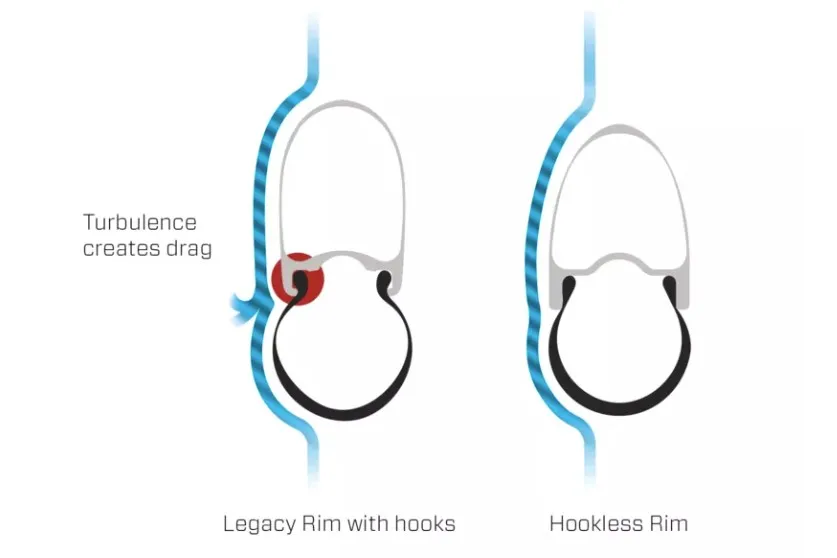
For Zipp, overcoming wind resistance is a combination of aerodynamic efficiency and crosswind stability.
The development of the original Firecrest shape, and the radical Sawtooth NSW shape (of the 858 and 454), combined Zipp’s research and testing in both areas.
With the dominance of road disc brakes, the latest generation of Zipp wheels don’t have to account for a rim-brake surface, so they’re wider and, according to Zipp, better shaped for a smooth interface between the rim and tyre.
According to Zipp, the move to a hookless rim also helps provide a smoother rim and tyre combination, reducing an area of high turbulence and, therefore, drag.

Gravity
While the revised shape of the rim, and the introduction of hookless technology, improves aerodynamics, Zipp says there’s also a benefit in saving weight.
The weight savings here are impressive, with 282g saved on the 808 and 243g on the 858 NSW.
Where these were wheelsets used primarily in time trials, triathlons or fast road races, the new claimed wheelset weights of 1,635g (808 – 752g front, 883g rear) and 1,530g (858 NSW – 719g front, 811g rear) put these in the realm of general road racing in favourable wind conditions (they're still super-deep rims, after all).
Rolling resistance
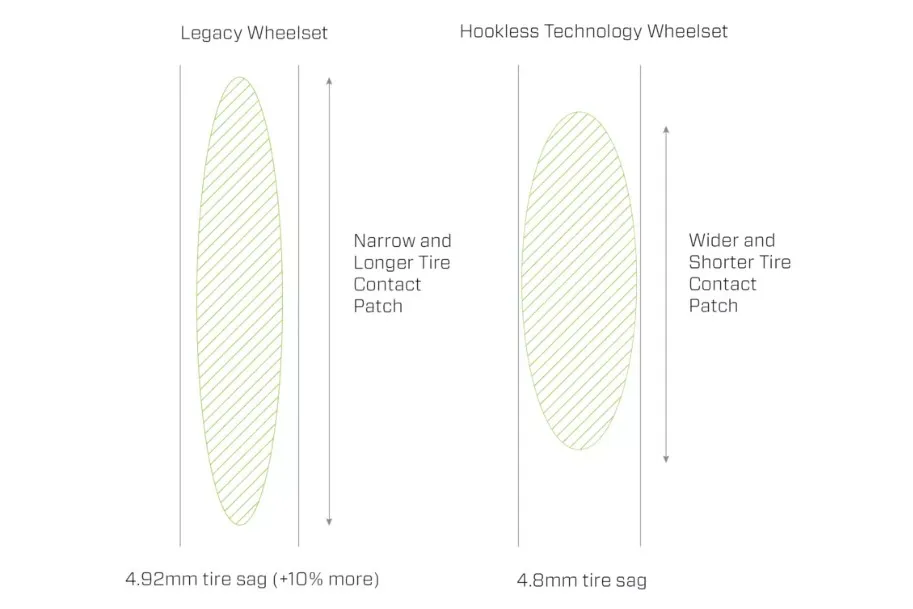
This is where things can get interesting. For years, road riders thought that a narrower tyre, pumped up to a high tyre pressure on a road bike, was the fastest option.
The latest research, however, has shown that it’s better to go wide – within reason – to reduce rolling resistance. It’s a trend we’ve seen everywhere from size availability on the best road bike tyres, to the latest Tour de France machines.
A tyre contact patch relates to its rolling resistance, and the contact patch is defined by rider weight and tyre pressure. For instance, if you take two bikes with the same rider and two different tyre widths but the same pressure in those tyres, the contact patch would be the same because they're both supporting the same load with the same amount of pressure.
The big difference is in the shape of the contact patch. A wider tyre will produce a wider but much shorter contact patch compared to a narrow tyre. That means less ‘sag’ in the tyre, deforming the tyre less, and less energy lost when rolling.

Vibration losses
The final piece in the TSE puzzle, and one Zipp identified as being able to bring big efficiency gains, covers vibration losses.
For example, while the new 858 rim shape is only one watt more aerodynamically efficient, according to Zipp, the brand’s real-world testing has shown gains of eight watts for the 858 and five watts for the 808 when it comes to vibration and rolling resistance improvements.
While running a wider tyre at a lower pressure helps, Zipp says there’s also a contribution from the new rim construction, called CiR (Carbon internal Reinforcement). It’s an idea borne out of Zipp’s 'Nest' development lab, which allows the quick development and testing of fully functioning, prototype rims.
Most carbon wheel designs (including Zipp’s previous ranges) used a rim with a uniform thickness throughout. However, Zipp’s testing and analysis has shown that forces acting on a rim are not uniform. As a result, the CiR design places material where it’s needed and removes any excess material. The finalisation of this design apparently took more than two years.
The final design is best described as having an internal skeleton that’s wrapped with a fine carbon skin, much like the wings of an aircraft. The result is not only a rim that’s 10 per cent lighter than the previous model, even though it's wider, but one that’s also significantly more flexible in its sidewall.
That means better absorption of vibrations from the road, and a less fatiguing ride as a result. Zipp also says it’s more efficient because the tyre stays in contact with the road surface rather than skipping and bouncing across it. This all adds up to a faster wheel, despite losing the focus on aerodynamics.
Prices and availability
Both the 808 and 858 NSW are available from today, with pricing information below.
Zipp 858 NSW
- Zipp 858 NSW front wheel: £1,585 / $2,000 / €1,775
- Zipp 858 NSW rear wheel: £1,985 / £2,400 / €2,225 (XDR)
- Zipp 858 NSW rear wheel: £1,985 / £2,400 / €2,225 (Shimano/SRAM)
Zipp 808 Firecrest
- Zipp 808 front wheel: £1,095 / $1,125 / €1,225
- Zipp 808 rear wheel: £1,140 / $1,175 / €1,275 (XDR)
- Zipp 808 rear wheel: £1,140 / $1,175 / €1,275 (Shimano/SRAM)
A Campagnolo N3W driver is available separately for both wheelsets.

